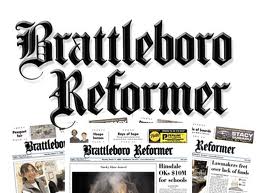BillMoyers.com, October 11, 2013
This article first appeared at YES! Magazine.
Chokwe Lumumba was an unlikely candidate for high office in Mississippi. But last June, the former black nationalist and onetime attorney to Tupac Shakur was elected mayor of Jackson, Mississippi. He’s now in hot pursuit, not of big box stores or the next silver bullet solution to what ails the state’s capital city. He wants to create worker-owned cooperatives and small-scale green businesses and to invest in training and infrastructure. It’s the program of change he ran on in the election: local self-reliance.
Peaches, a soul-food restaurant on Jackson’s historic Farish Street. The business was started in 1961 by Wilora “Peaches” Ephram and was frequented by leaders in the Civil Rights movement.
…snip…
Commonomics
Welcome to “Commonomics,” a new collaboration between YES! Magazine and GRITtv. Starting this month, we’ll be traveling the country asking the question: what makes for a strong local economy? It’s not a question that produces easy answers.
Beyond GDP: Measuring What Matters
Aggregate counts of economic activity like gross domestic product, or GDP, give all activity equal value. The cultivating of an urban farm, which may involve little paid work and consume few bought materials, is less “productive,” in GDP terms, than paving that farm over.“When grain prices go up, that’s good for GDP but terrible for hunger,” says Joshua Farley, a professor in community development and applied economics at the University of Vermont. ”GDP is an excellent measure of cost; a terrible measure of benefit.”To even start a new conversation, we need new measurements. As the Business Alliance for Local Living Economies (BALLE) puts it, it’s time to start “measuring what matters.”
…snip…
What is a local economy, anyway?
“Local” has become a buzzword. There’s “eco-localism,” local food and local farming, local media movements and regional, state and even national ad campaigns urging us to “eat local, buy local and put local first.” Local’s gone global, but what exactly does it mean?
I bought the desk I’m writing on on eBay. I’ve saved a pretty antique from the dump and spared the environment the cost of a bit of fresh manufacturing. But compared to the closest furniture factory, is that nice eBay seller in Oklahoma contributing more or less in terms of jobs and taxes? The mind boggles.
Stacy Mitchell, director of independent business and community banking initiatives at the Institute for Local Self-Reliance, says “local” varies by sector of the economy. Retail and banking businesses can be considered local if the owners are within a certain geographic area. But every village is not going to start making its own jet aircraft. “Talking manufacturing, you may need to be talking regional or statewide,” says Mitchell.
Geography matters less than goals, she continues: “The goal is having community-led, community-controlled economies where the decision-making is by those who are feeling the effects of the decisions that are made. [We need] humanly scaled systems both in economics and politics.”
At the American Sustainable Business Council, David Levine talks about the “triple bottom line” of social, environmental and economic impacts.
“Within that frame, local by itself is not enough,” he says. Levine does not want people buying “local first” from a locally owned sweatshop or toxic chemical plant. To avoid that, what’s important to business owners and consumers alike, he says, is that there be “transparency around values.”
…snip…





